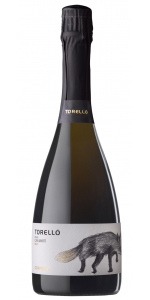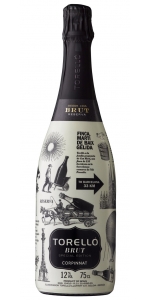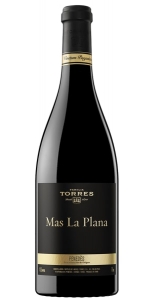Wine from Catalonia

Located on the Mediterranean coast in the north east of Spain, Catalonia is a wine region that is strongly affected by the climate. The coastal temperatures are quite warm to hot with moderate precipitation, but the conditions become cooler and more arid as you go further inland. Most of the Catalonian denominaciones lie south of the French border at the Pyrenees Mountains while the smaller vineyards are north of Barcelona. The Catalonian region enjoys warm climates along the coast with cooler temperatures winding through the foothills and up to the plateaus of the mountains rising over 2,000 feet above sea level.
The soil in Catalonia is diverse, with the majority being calcareous sediments mixed with clay and alluvium. With that being said, some world-renowned vineyards in the Catalonia region have scatters of limestone deposits in the area. The wines in the region include powerful reds, known as black wine, dry white wines, and sparkling Cava. The grapes grown in Catalonia include Macabeo, Parellada and Xarel•lo and the red wine grapes of Garnacha, Monastrell and Tempranillo. Sparkling wine is the largest contributor of wines in the Catalonia industry followed by white and red. The majority of the wines are blends.
Torello Corpinnat Finca Can Marti Brut 32% Chardonnay, 32% Xarel.lo, 22% Macabeo and 14% Parellada.
The Can Martí estate soils have been formed from sediments from the Garraf Massis, deposited thousands of years ago. One of the most characteristic features of the estate’s soils is the presence of accumulations of calcium carbonate.The movement of water through the soil dissolves the carbonates present and takes them to a certain depth. The continuous repetition of this process has ended up producing the accumulation of these deposits.When these become massive, after thousands of years, they bind together and and form a hard stratum called a petrocalcic horizon. This hard stratum limits the availbility of water to the vine and the production, but is a factor that gives the grape quality.
Straw yellow color, fine and constant bubbles, clean and bright, with golden reflections. The nose reveals a subtle aromatic intensity with fresh and sweet aromas. Honey flowers, citrus notes, white fruit, and balsamic herbs such as fennel.
In the mouth the acidity is well balanced, with delicate bitter notes to the finish and a set of ripe fruits and balsamic nuances.
Torello Corpinnat Special Edition Brut Reserve is made from 44% Xarel.lo, 37% Macabeo, 11% Chardonnay, 8% Parellada.
The estate soils have been formed from sediments from the Garraf Massis, deposited thousands of years ago. One of the most characteristic features of the estate’s soils is the presence of accumulations of calcium carbonate. The movement of water through the soil dissolves the carbonates and takes them to a certain depth. The continuous repetition of this process has ended up producing the accumulation of these deposits. When these become massive, after thousands of years, they bind together and form a hard stratum called a petrocalcic horizon. This hard stratum limits the availability of water to the vine and the production, but is a factor that gives the grape quality
The wine offers a straw yellow color, clean, transparent, fine, and persistent bubbles with a rosary formation. In the nose fresh pear aromas stand out along with delicious notes of pastry cream, white flowers, and candied fruits. On the palate, good balance and acidity. Powerful and flavorful with white flowers and notes of brioche, almond and great length.
Special Edition is very versatile and matches with many different kinds of dishes; pasta, pork, chicken, fish, seafood, rice, cold cuts, desserts.
Torello Corpinnat Special Edition Brut Reserve is made from 44% Xarel.lo, 37% Macabeo, 11% Chardonnay, 8% Parellada.
The estate soils have been formed from sediments from the Garraf Massis, deposited thousands of years ago. One of the most characteristic features of the estate’s soils is the presence of accumulations of calcium carbonate. The movement of water through the soil dissolves the carbonates and takes them to a certain depth. The continuous repetition of this process has ended up producing the accumulation of these deposits. When these become massive, after thousands of years, they bind together and form a hard stratum called a petrocalcic horizon. This hard stratum limits the availability of water to the vine and the production, but is a factor that gives the grape quality
The wine offers a straw yellow color, clean, transparent, fine, and persistent bubbles with a rosary formation. In the nose fresh pear aromas stand out along with delicious notes of pastry cream, white flowers, and candied fruits. On the palate, good balance and acidity. Powerful and flavorful with white flowers and notes of brioche, almond and great length.
Special Edition is very versatile and matches with many different kinds of dishes; pasta, pork, chicken, fish, seafood, rice, cold cuts, desserts.
Torello Corpinnat Special Edition Brut Reserve is made from 44% Xarel.lo, 37% Macabeo, 11% Chardonnay, 8% Parellada.
The estate soils have been formed from sediments from the Garraf Massis, deposited thousands of years ago. One of the most characteristic features of the estate’s soils is the presence of accumulations of calcium carbonate. The movement of water through the soil dissolves the carbonates and takes them to a certain depth. The continuous repetition of this process has ended up producing the accumulation of these deposits. When these become massive, after thousands of years, they bind together and form a hard stratum called a petrocalcic horizon. This hard stratum limits the availability of water to the vine and the production, but is a factor that gives the grape quality
The wine offers a straw yellow color, clean, transparent, fine, and persistent bubbles with a rosary formation. In the nose fresh pear aromas stand out along with delicious notes of pastry cream, white flowers, and candied fruits. On the palate, good balance and acidity. Powerful and flavorful with white flowers and notes of brioche, almond and great length.
Special Edition is very versatile and matches with many different kinds of dishes; pasta, pork, chicken, fish, seafood, rice, cold cuts, desserts.
Mas la Plana is graceful and balanced despite its firm and dominant tannin profile. Bright crunchy acidity ensures a wine that will develop in the cellar for years to come. This polished red displays hints of its Mediterranean heritage with herbaceous bramble while holding true to brooding currant and loamy earth, reminiscent of old-world Cabernet Sauvignon.
Review:
Inviting mint, floral, cassis, clove and cinnamon nose. Juicy, lively and fresh on entry, with densely-packed soft black fruits, blackcurrant jam and spice. Textural and long with fine silky tannins and tidily-integrated acidity. Superb overall length and finish.
Decanter 97 Points
- back
Selected Options
Regions
Categories
Pricing
Countries
Regions
Grape Types
Wineries
Organic/Free Shipping
Far Niente Napa Valley Cabernet Sauvignon is made from 88% Cabernet Sauvignon, 6.5% Merlot, 2.5% Malbec, 2.5% Petit Verdot, 0.5% Cabernet Franc.
Beautiful aromas of dark plum, red cherry, licorice and warm baking spices open onto a plush and silky palate layered with plum, spiced cherry and cassis. A classic Napa Valley Cabernet, fine-grained tannins and lively acidity support the wine throughout, while the finish is refined and polished.
Review:
Very precisely polished and focused wine with aromas of black cherries, blue berries and violets followed by green bell pepper, black ink and gravel. Underlying umami notes, too. Full-bodied, firm yet finely grained juicy tannins with bright acidity that balances out the palate. Beautifully integrated toasty notes and baking spices on the mid-palate and in the finish. Flourishing and artful wine that will age gracefully.
-James Suckling 96 Points
Michel Thomas Sancerre Blanc is 100% Sauvignon Blanc (40% Caillottes, 40% Grosses Terres, 20% Silex)
The wine displays an exotic nose with a touch of smoke and licorice. On the palate, peach and watermelon dominate with citrus zest and chalk notes.







